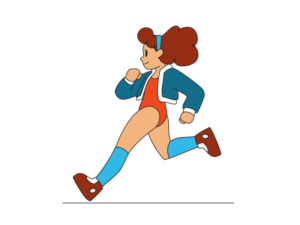Regardless of whether you have the talent or ability to do some physical activity, getting started is always difficult. Your body will have to get used to the impact of exercise. During this period it is normal to feel more tired, the body sore. And in race training for beginners, it’s no different. The difficulty will also be great.
And in the quest to start running, especially if you don’t have a personalized follow-up, it’s common to hear different opinions about what to do or what works best. Many end up choosing to follow fancy ideas or unfeasible routines for their profile.
But let’s not forget that this is a big risk. A wrong decision can be the difference between your evolution in running training or suffering an injury.
So, we’ve separated for you 3 tips of what not to do in the beginner’s running training. Let’s check it out?
Start with running and walking workouts
Starting your running training depending only on your perception and following the idea of “I’m going to run as fast as I can and when I get tired I’ll walk” is wrong. This is because, when you use only physical wear as a reference, you excessively strain muscles and joints.
In addition, the cardiorespiratory part develops faster than muscles and bones. This gives the runner the misconception that he is ready to train harder, increasing the risk of joint inflammation and injury.
So start with a walk-to-run ratio of between 3 and 4 x 1. A good example would be 8 minutes of walking to 2 minutes of light running. You can increase the challenge every 2 to 4 weeks, depending on your fitness level, by reducing your walking time or increasing your running.
This strategy can be maintained until the time when the relationship between walking and running times is reversed.
Follow the rhythm of friends or challenge yourself excessively
Started training with a friend and is he evolving or training at a different pace than yours? Avoid following him. He may be over-paced or even better fit than he is.
The same goes for the cases of group training. In environments where more people train together, it’s natural that people don’t want to be left behind. This can cause you to run longer and faster, precipitously.
Beginner racing requires greater care, mainly because the sport base is not yet formed. Of course it’s very annoying to be left behind. But this condition is only temporary and will prevent problems early in your running training.
Race for beginners? Orientation is key
There is often a lack of time or time available to follow up, but having the guidance of a coach is critical for a beginning runner.
Can’t be part of a racing group? Opt for remote support for your workouts. Having a running coach to guide you, especially in the first steps, will (a lot) decrease the chance of basic mistakes, helping you to work out the training loads between walking and running.
If you liked the tips, leave a comment! I’d love to hear from you!




Leave A Comment